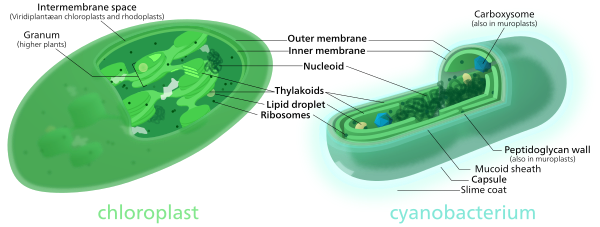JOURNAL 4: ENDOSYMBIOSIS
Week 4
Where do the eukaryotic cell come from???
This topic of endosymbiosis will explain about it. The term of endosymbiosis itself explain where the eukaryotic generally come from. It happen when the fusion of prokaryotes causes the rising of eukaryotes. If the bacteria accidentally swallowed autotroph bacteria, it will become origin of eukaryotic plant cell. While if the bacteria accidentally swallowed heterotrophic, it became origin of eukaryotic animal cell.
Where do the eukaryotic cell come from???
This topic of endosymbiosis will explain about it. The term of endosymbiosis itself explain where the eukaryotic generally come from. It happen when the fusion of prokaryotes causes the rising of eukaryotes. If the bacteria accidentally swallowed autotroph bacteria, it will become origin of eukaryotic plant cell. While if the bacteria accidentally swallowed heterotrophic, it became origin of eukaryotic animal cell.
It is said that origin of eukaryotic cell organelles such as mitochondria in animal and chloroplast in plant was greatly advanced by the endosymbiosis process. Thus, our lecturer had given task to compare and contrast the difference of mitochondria and chloroplast. They have difference such as in energy production, final electron acceptor, DNA chromosomal and reproduction.
Possible ancestor for chloroplast and mitochondria
Due to task given, we had to noting any similarities or differences the mitochondria and chloroplast whether the possibility of ancestor come from eukaryotic or prokaryotic. Through the activity, both organelles show more similarities to the prokaryotes ancestor which same in DNA, replication, ribosome, size and genetic code.
Cyanobacteria and α-proteobacteria are the most closely related free-living organisms to chloroplast and mitochondria respectively.
Primary endosymbiosis & Secondary endosymbiosis
From what I heard, there is primary endosymbiosis and secondary endosymbiosis.
Primary endosymbiosis involves the engulfment of a cell by another free living organism. Secondary endosymbiosis occurs when the product of primary endosymbiosis is itself engulfed and retained by another free living eukaryote. Secondary endosymbiosis has occurred several times and has given rise to extremely diverse groups of algae and other eukaryotes.
To be simple, the engulfing causes the process called as endosymbiosis. Hope you guys understand what this topic about.


Comments
Post a Comment